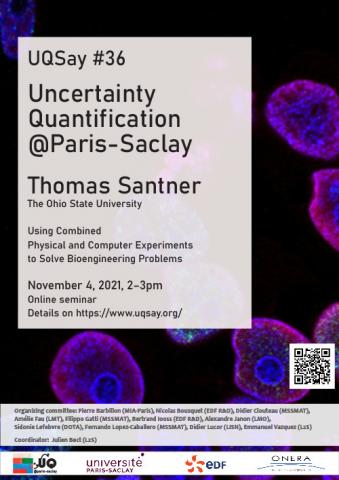
UQSay#36: Combined physical and computer experiments
Bioengineering seeks to solve problems at the confluence of Engineering and Biology. Classical Bioengineering applications concerned the engineering design, and analysis of the performance of prosthetic joints, such as hips and knees, in multiple operating environments. More recent Bioengineering applications are concerned with designing replacement tissues, and analyzing different treatments for joint tissue injuries. Finite element methods can be used to numerically approximate the stresses and strains in the human bone when prosthetic joints are implanted or when cushioning tissues such as menisci are damaged. Prediction methodology from the computer experiments literature can be used to approximate the stresses and strains for a wide variety of potential prosthetic designs, to study their performance in multiple environments, and to determine the sensitivity of the prosthetic designs to specific engineering and environmental inputs. This talk will provide an overview of two such projects and describe how computer experiment methodology, including calibration to cadaver data, was used to provide insight into their solution.
En ligne / onlineBioengineering seeks to solve problems at the confluence of Engineering and Biology. Classical Bioengineering applications concerned the engineering design, and analysis of the performance of prosthetic joints, such as hips and knees, in multiple operating environments. More recent Bioengineering applications are concerned with designing replacement tissues, and analyzing different treatments for joint tissue injuries. Finite element methods can be used to numerically approximate the stresses and strains in the human bone when prosthetic joints are implanted or when cushioning tissues such as menisci are damaged. Prediction methodology from the computer experiments literature can be used to approximate the stresses and strains for a wide variety of potential prosthetic designs, to study their performance in multiple environments, and to determine the sensitivity of the prosthetic designs to specific engineering and environmental inputs. This talk will provide an overview of two such projects and describe how computer experiment methodology, including calibration to cadaver data, was used to provide insight into their solution.
